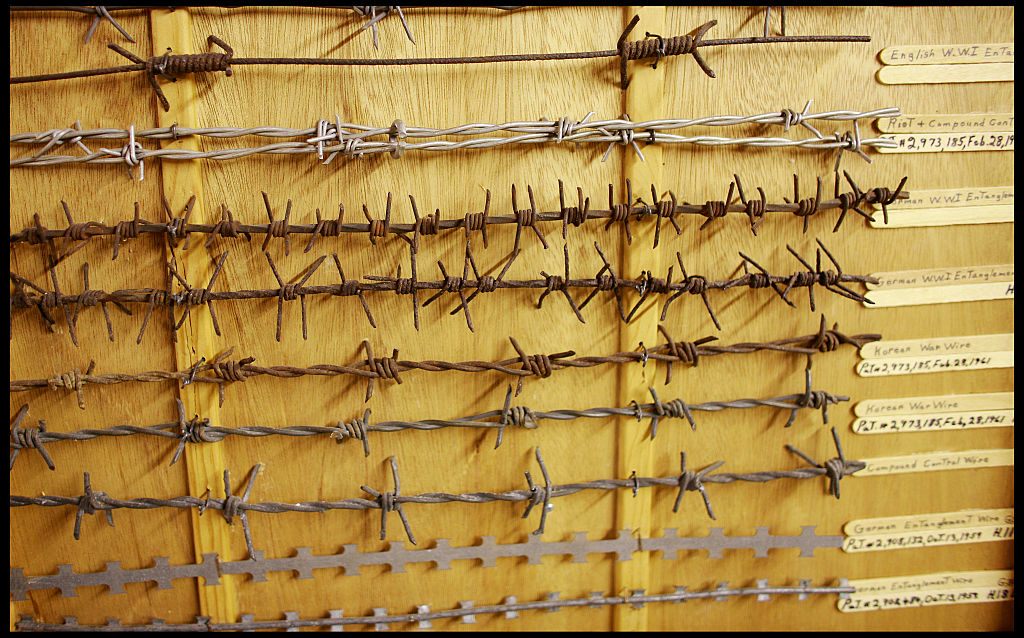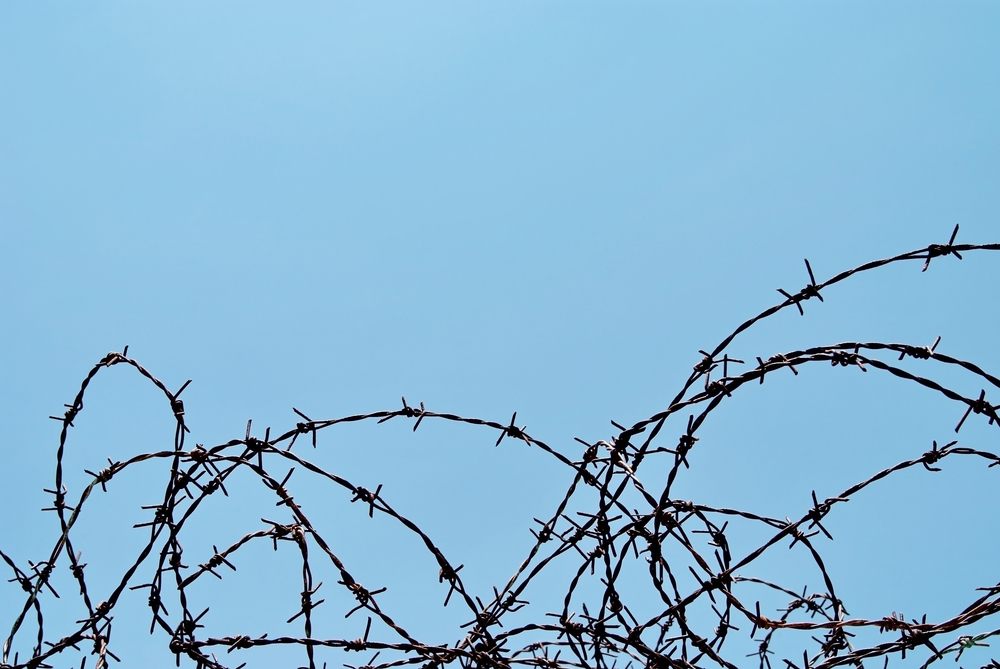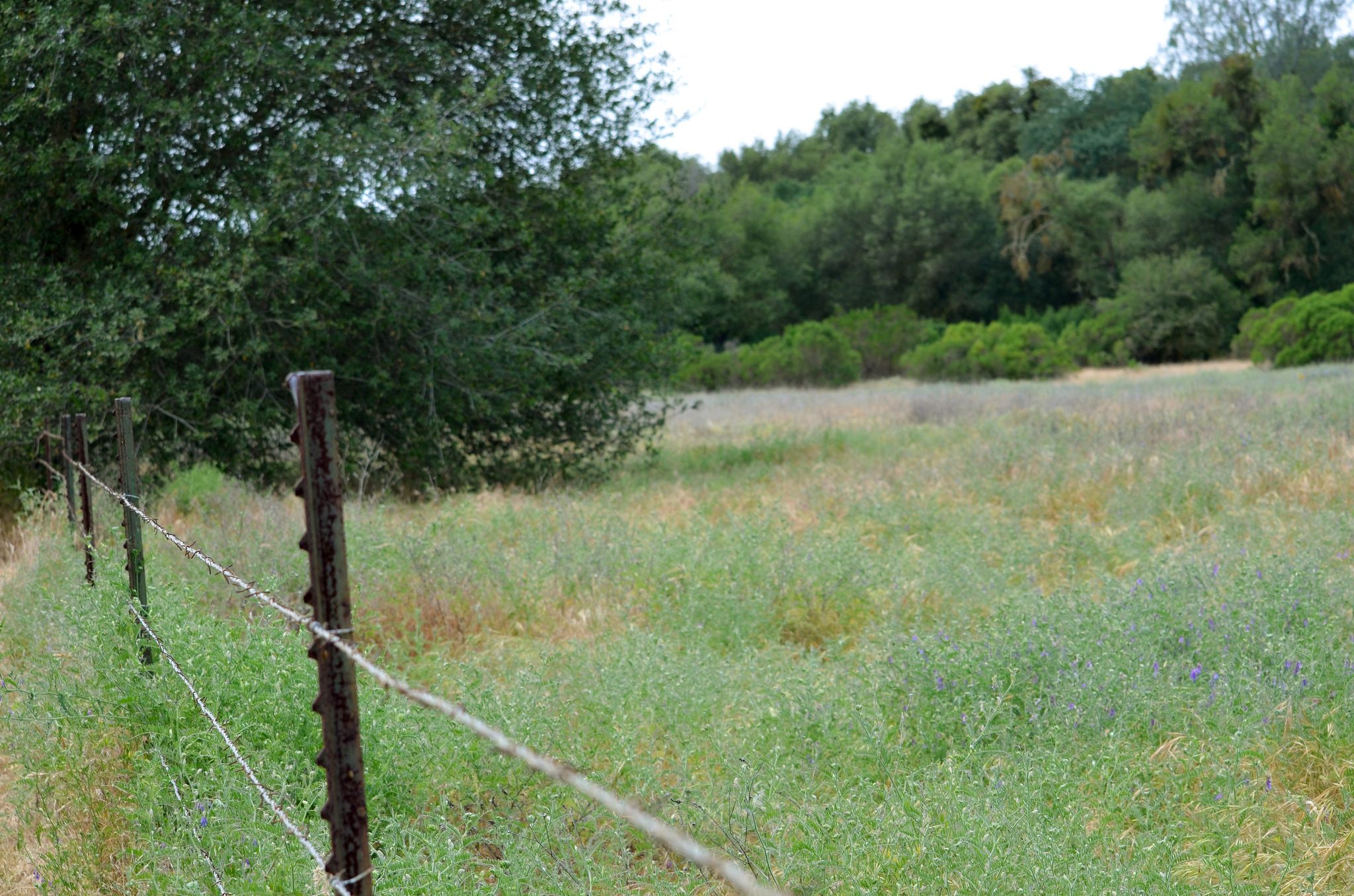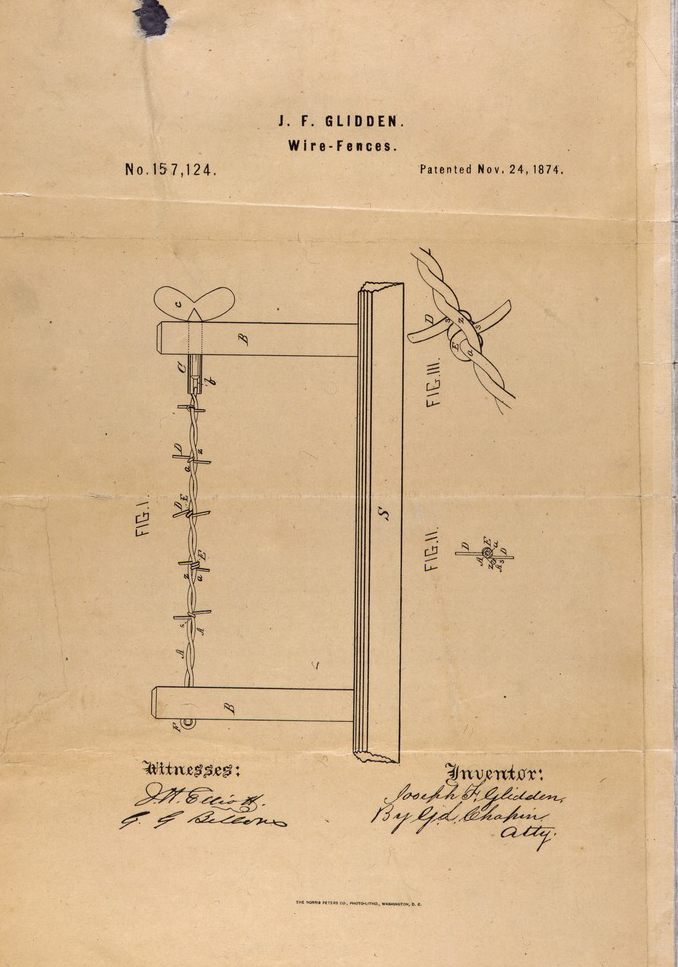The Invention that Tamed America, and the Town Obsessed with It
Western agriculture is hard to imagine without barbed wire.

Could anything be less friendly than barbed wire? Its whole purpose is to deter, to turn back, to prevent both entry and escape. For 150 years it has stuck cattle, ensnared soldiers and encircled concentration camps. It is not a friend to living things. So why on Earth would the small town of La Crosse, Kansas, proudly proclaim itself the Barbed Wire Capital of the World?
La Crosse (population 1,289, or a crowded New York subway train) is obsessed with the devilish stuff. It plays host to the annual Kansas Barbed Wire Collectors Association Swap and Sell, as well as its showcase event, the World Champion Barbed Wire Splicing Contest, in which contestants race against the clock to try and repair a stretch of snapped wire. The town even contains the Kansas Barbed Wire Museum, displaying around 2,000 unique varieties dating back to the middle of the 19th century.
It is this remarkable ability of a single piece of twisted wire to take on a multiplicity of forms that helps explains La Crosse’s peculiar attraction to it. And of course there is its storied history.

A tangle of barbed wire against a blue sky. (Photo: SonNumber4/shutterstock.com)
Alongside the Colt pistol and the railroad, barbed wire is usually listed as one of the three main factors in how the West was won. Following the Homestead Act of 1862, millions of acres of the western United States were opened up to farming and new settlers needed something to protect their crops from free-roaming cattle and bison. Wooden fencing was expensive because the plains lacked trees, and furthermore it was susceptible to fire. Simple wire fences were light, inexpensive, and easy to erect. Wind didn’t blow them down and snow didn’t pile up against them. However when a wire fence was placed between a 1,000-pound Texas longhorn and a patch of lush green pasture, it proved to be something of a pushover.
Thorny hedges were perfect barriers to cattle, but planting thousands of miles of bushes was impracticable. Some kind of fence that mimicked the thorn bushes was needed, but how could you make such a fence? So began a low-tech prairie version of the internet boom in which hundreds of entrepreneurs from across the country rushed to create a new type of spiky fencing. In 1867 the sharply-monikered Alphonso Dobb created the first recorded type of fence with defensive points or barbs. Named “The Picketed Strip” it looked ominously medieval and was meant to be attached to existing fencing. It was not a success. That same year the more prosaically named Lucien B. Smith created a more prosaic invention, “thorny wire”, in which he took a normal wire fence and hung it with wooden spools hammered with nails. Although visionary, it too was unsuccessful.

Barbed wire in a meadow. (Photo: Eric Sonstroem/CC BY 2.0)
Between 1867 and 1874 alone as many as 200 different types of spiked fencing were patented. As depicted in the fittingly christened Jesse James’ interminable tome, Early United States Barbed Wire Patents, these fences were covered with “prickers”, “prods”, “brads”, “spurs”, “prongs”, and “teeth.” It was not until 1871 that Lyman P. Judson named his projecting metal points “barbs”, and the term we now use stuck, even though Judson’s design didn’t.
The problem with many of these early designs was that the barbs had to be clamped to their wire individually by hand. This was a slow, tedious and often painful business. What’s more the fact that the barbs were not firmly held in place meant that if the fence was struck by lightning its barbs would often run together and fuse into a molten lump, leaving stretches of the fence barb-free.

An 1874 patent by J. F. Glidden for improvements to barbed wire. (Photo: NARA)
It was in 1874 that inspiration struck. Unfortunately it hit two people at once. Joseph Glidden and Jacob Haish both patented a type of double stranded barbed wire in which a barb could be mechanically placed on one wire with the other wire being twisted around it to hold it in place. This simple design innovation is the basis for the barbed wire we know and fear today. A patent battle ensued between Glidden and Haish with Glidden eventually triumphing and magnanimously branding his design, “The Winner.” He soon became one of the richest men in America.
Haish, meanwhile, saw himself as a martyr to the barbed wire cause. He published an extraordinary piece of poetry in the Regulator magazine, rich in Biblical allusion, that was entitled “Be Happy as You Can” and was directed at those ‘scalpers’ he thought had stolen his invention:
“This life is not all sunshine,
As Barb Fence scalpers have found;
The crosses they bear are heavy,
And under them lies no crown;
And while they’re seeking the roses,
The thorns full oft they scan,
Yet let them, though they’re wounded,
Be happy as they can.”
Unable to be credited as the father of barbed wire, Haish made sure he could be titled the father of barbed wire poetry.

An 1874 advertisement from a Texas newspaper. (Photo: GeoTrinity/CC BY-SA 3.0)
Yet although Glidden’s invention was extremely popular it was not the last word in barbed wire. Pioneers were unable to stop themselves from tweaking and tinkering with the form. It became a form of American origami; a homespun folk art that hardened pioneers could indulge in without any accusation of femininity. Barbs were created that were pyramidal, five-pointed, spiral twisted. Many of them are remarkably pretty and have the names to match—the Sunderland Kink, the Barber Perfect, the Jayne Hill, the Hold Fast, the Necktie, the Buckthorn, the Untorn Ribbon, the Corsicana Clip, the Nadel Two-Twist, the Underwood Tack.
In those halcyon days at the end of the 19th century, a poetry of wire sang out across the plains announcing itself as a true native art form, albeit with an inbuilt practicality that forswore any suspicion of urban artifice. Of course every new art form has its critics, but by the 1960s barbed wire had drawn to it thousands of connoisseurs—self-proclaimed “barbarians”—who sought out rare examples from across the country. (There are still dozens of different varieties being sold, be they 2-point or 4-point, straight or concertina, razor or ribbon, Iowa-style or Australian Standard.)
And so La Crosse became a kind of macho art capital, a downhome Louvre of the West, a safe place for menfolk to appreciate real American artistry. It is the one place in the world where barbed wire does not keep people out but instead draws them together.









Follow us on Twitter to get the latest on the world's hidden wonders.
Like us on Facebook to get the latest on the world's hidden wonders.
Follow us on Twitter Like us on Facebook